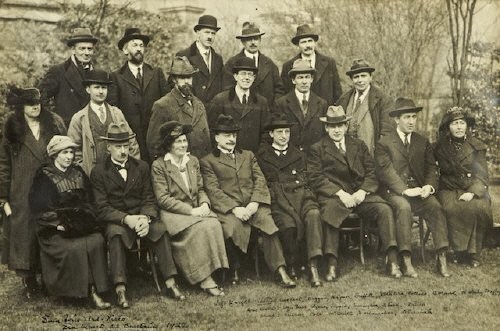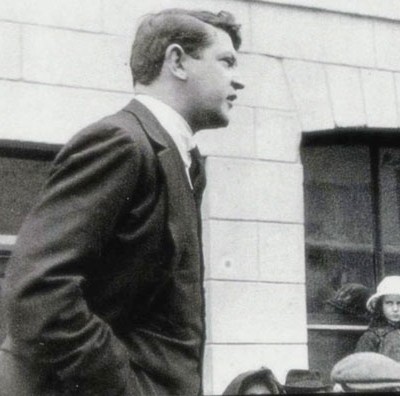(Also see linked posts:
“Reconciliation and the Irish Civil War” Pt I & Pt III on this blog site.)
It’s been seen how even the most seemingly reasonable outlook, (such as “..there were wrongs on both sides,”) can be twisted into travesty, where unjustly applied. Yet it must be said now that reconciliation over the Irish Civil War requires circumspection, and willingness to admit errors, in the proponents of both Free State (FS) and anti-Treaty (AT, ATI (/ AT IRA) views.
Among those who continue to support AT views, often the most frequent complaint is, “They (FS) turned the guns on comrades!” Yet the anti-Treaty faction was itself unquestionably the first to “turn guns on comrades“: away from British targets, toward fellow Irish. By the same token, the partition of the North remains a big issue on that table, and justly so. Yet with willful blindness to the fact that the joint pro- & anti-Treaty 1922 Northern Campaign, to reclaim the six counties on all fronts: diplomatic, political, and military, was ended expressly because of Civil War between comrades. Lest we forget, IRA units in the partitioned six counties did not take up arms against the Dublin government. It was crystal clear to them that such a policy, or any split in nationalist forces, would leave them at the mercy of the new, murderous, unionist regime at Stormont. And that’s precisely what happened.
In the Free State’s Civil War campaign “the rate of executions and imprisonment superseded that of the earlier struggle for independence.” (Prof Siobhra Aiken, Queen’s University Belfast) Spiritual Wounds: Trauma, Testimony, and the Irish Civil War post on this site] That is to say, exceeded British violence in Ireland over a comparable time span. Dublin’s summary executions without trial violated international conventions on war and human rights, then and now. Yet the inheritors of the FS establishment applaud their founders without exception as saviours of the country from bloody anarchy. Or was the FS government itself a form of bloody anarchy?
All of this was avoidable. By June 1922, Ireland, contrary to the conventional wisdom of hindsight, was bidding fair to avoid civil war entirely; much to the displeasure of the London regime, particularly Churchill. (May 1922: Leaders Strive to Prevent Civil War post this site]

Pro- and anti-Treaty representatives at 1922 Pact Elections meeting. Michael Collins, Arthur Griffith, Eamonn DeValera front row
The June 1922 “Pact Elections” proved a majority of the Irish public war-weary, and more than willing to accept, for now, the measure of independence won at the 1921 London negotiations. This result was freely admitted on all sides.
Just days after the poll was decided, two events overturned all laudable peace efforts, and hurled the country into full-scale civil conflict: the assassination of Sir Henry Wilson (post, this site) and the resulting shelling of the anti-Treaty garrison at Four Courts. ( Four Courts Bombardment – Who Gave the Order? post this site)
According to the [Four Courts garrison], they were loading their arms onto lorries and would have evacuated the Four Courts by 8AM in the morning. Had the shelling not started at 4AM, they say, there would have been no Civil War.
– John M Feehan
Michael Collins has unjustly been scapegoated as having ordered both disastrous actions; despite marked lack of substantial evidence that he did so. ( Sir Henry Wilson Assassination 1922 post, this site) Both may be said to have led directly to his own killing, just weeks later. Hazy, contradictory details in the chain of command in those actions echo the mystery surrounding Collins’ suspicious death; as well as that of Arthur Griffith, Harry Boland, and Liam Lynch.
Certainly blaming the victim is ever an all too convenient cop out. But Collins did not survive years on the most wanted list, captain Ireland’s most successful assault on foreign occupation yet, all the way to the negotiating table, winning unprecedented liberties which voided the nefarious Treaty of Limerick and Act of Union… by being known for such monumentally suicidal blunders.
…There is as yet no adequate study available dealing with the role of the British secret service in the Civil War. No one really knows how far their promptings were responsible for starting the Civil War or indeed for the subsequent shooting without trial of so many republican prisoners.
– Feehan
Who was a traitor?
It’s necessary for commentators of all persuations to acknowledge that many well-meaning patriots supported FS and AT alike. Even as well-intentioned voters in Ireland today might vote for Sinn Fein, Fine Gael, Fianna Fail, the Labour Party, the Green Party, People Before Profit… as it may seem to them might best serve the country’s needs.
I disagreed with MIchael Collins about the Treaty. But he was no traitor.
– Kathleen Clarke
At the same time, Feehan’s call (above) for greater scrutiny of the role of clandestine British operations in the Civil War has remained a voice crying in the wilderness. While spies and “moles” (those who joined nationalist forces as operatives for the British) are freely discussed in histories of the Anglo-Irish War 1919-1921 (aka War of Independence / Tan War,) the topic with regard to the Civil War seems almost taboo. No one wants to admit that such operatives could have been active on their side.
Even as sincerity was in plentiful supply on both sides, it’s necessary to recognize that neither was either free from opportunists, even in the leadership of both sides: willing enough to exacerbate the situation, without regard to Ireland’s welfare; but rather with a view to their own subsequent post-war career. As history shows, some did very well for themselves by it.
Soul-searching among leaders of today would not be remiss: is there not reluctance to critique one’s own political forebears / founders of one’s own party? Certainly, in practical terms, every politician’s number one job is to raise a cheering section: to drum up support for their party. Whatever their programs, their sole means of pursuing them, is to gain power; which is to say, to gain popularity.
Who can blame them, if history may often be with them largely a tool for realizing such goals? How can they see a too-unsparing moral inventory of their founders as in any way related to that job?
Yet surely, any party which advertises itself as offering government for all, must move past a partisan position on the Civil War; and ought to do better than commemorating 1922 with a statement that “the shelling of the Four Courts started the Civil War.” As if no events preceded and led up to that turning point; as if members of the ATI garrison at Four Courts had no part in picking up the gun against their own countrymen, but were merely sitting on the quay, smelling a flower! As if both pro-and anti-Treaty leaders did not first carry on months of painstaking negotiations to avoid conflict.
“When choosing someone for a mission in which courage and judgement are equally required, I’d rather send a clever coward than a stupid hero.”
– Michael Collins
Perhaps the greatest service to Ireland possible, with regard to Civil War commemoration, might be for today’s prominent political representatives to cop on, and be an example of the good old democratic principle of criticism/self-criticism. To admit that, for all their sincere patriotic intentions, it was the ATI who first “turned guns on comrades“; and that their doing so never won a single further millimeter of Irish soil from British control. That however politically correct anyone might esteem them, their military strategy was a failure.
Let’s see the present Fianna Fail / Fine Gael (FF/FG) establishment issue a condemnation of the wanton executions, imprisonment, and torture practiced against the ATI under their successive governments; as well as their like failure to address or improve upon Ireland’s most imperfect independence, for the past 100 years.
Let’s be revolutionary. Let’s revolutionize the way we think of the Civil War; the way we deal with each other, and with that past.
R E A D M O R E
on Irish History / Irish Civil War:
“The Assassination of Michael Collins:
What Happened At Béal na mBláth?”
by S M Sigerson
Paperback or Kindle edition here:
www.amazon.com/dp/1493784714
All other e-reader formats:
www.smashwords.com/books/view/433954
Read reviews:
http://www.rabidreaders.com/2014/12/03/assassination-michael-collins-s-m-sigerson-2/
OR ASK AT YOUR LOCAL BOOK SHOP














